Intermediate has been moving at full speed, and here are my thoughts so far:
1. There are many different ways to cook poultry.
2. There are many types of food that can be stuffed.
3. Chefs like to use as many types of pots/pans/bowls as possible (extra credit: how many recipients are in use above?).
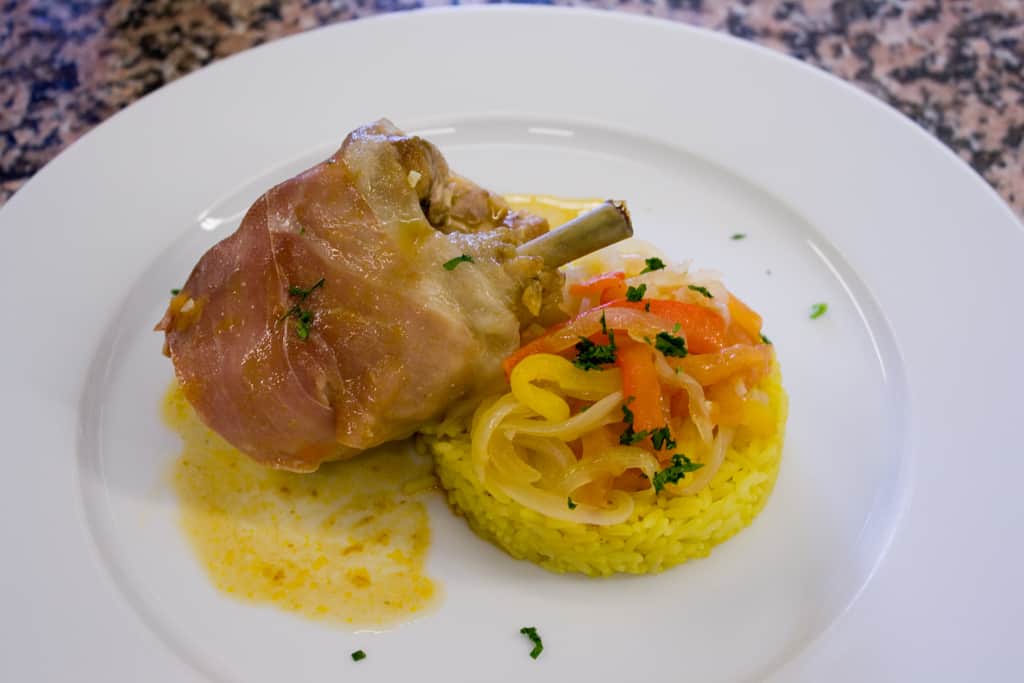 Lesson 1: Poulet Sauté Basquaise
Lesson 1: Poulet Sauté Basquaise
After an amazing vacation, it was a bit hard to get back into kitchen mode. Then first lesson was a bit tough, as it was one of the first times we had three different elements on the plate, but I think it was a good kick start to the semester. Start tough!
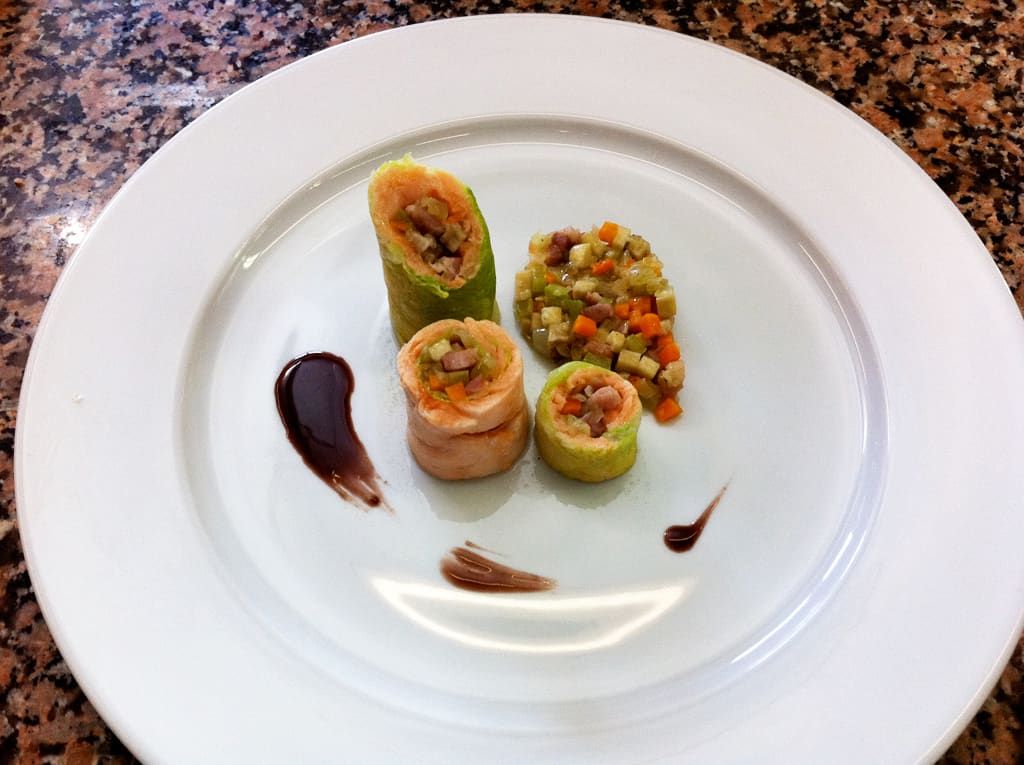 Lesson 2: Saumon Farci en Feuille de Chou Vert
Lesson 2: Saumon Farci en Feuille de Chou Vert
This was the first of the many “stuffed” classes to come, but since it was the first I had a lot of fun with it. I think this was the first time that I actually felt excited about my plating, but of course the chef didn’t quite agree, haha. Nothing major, but he showed me that if I shifted the teardrop a few degrees outward it would open the whole presentation and it really did make the plate look 10x better.
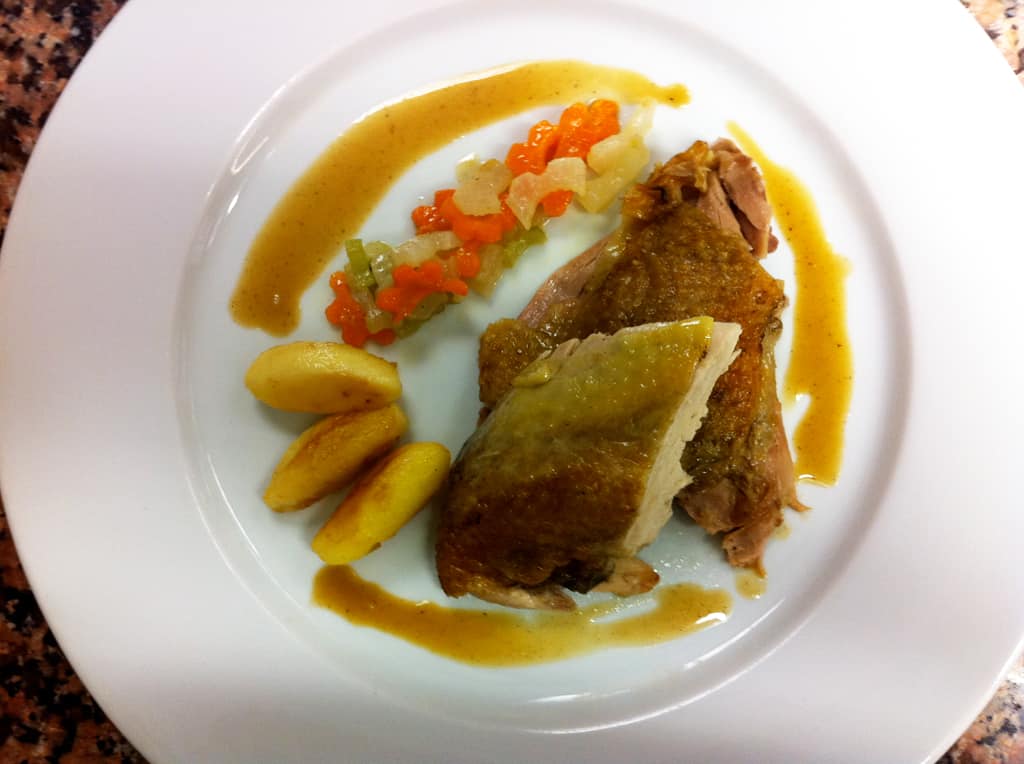 Lesson 3: Pintade Fermière Poêlée Vallée d’Auge
Lesson 3: Pintade Fermière Poêlée Vallée d’Auge
Guinea Fowl. Poultry #2
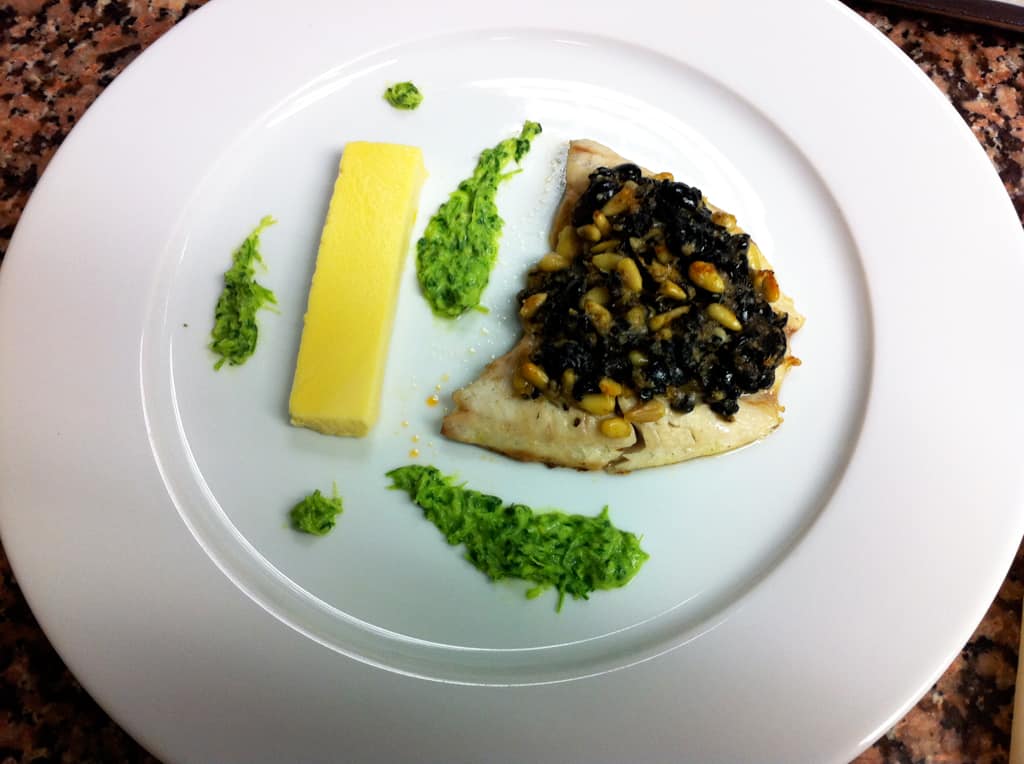 Lesson 4: Rouget Barbet, Gratiné à la Tapenade d’Olives, Royale d’Oignons, Sauce Émulsionnée à l’Anis Étoilé et Persil
Lesson 4: Rouget Barbet, Gratiné à la Tapenade d’Olives, Royale d’Oignons, Sauce Émulsionnée à l’Anis Étoilé et Persil
Stuffing #2
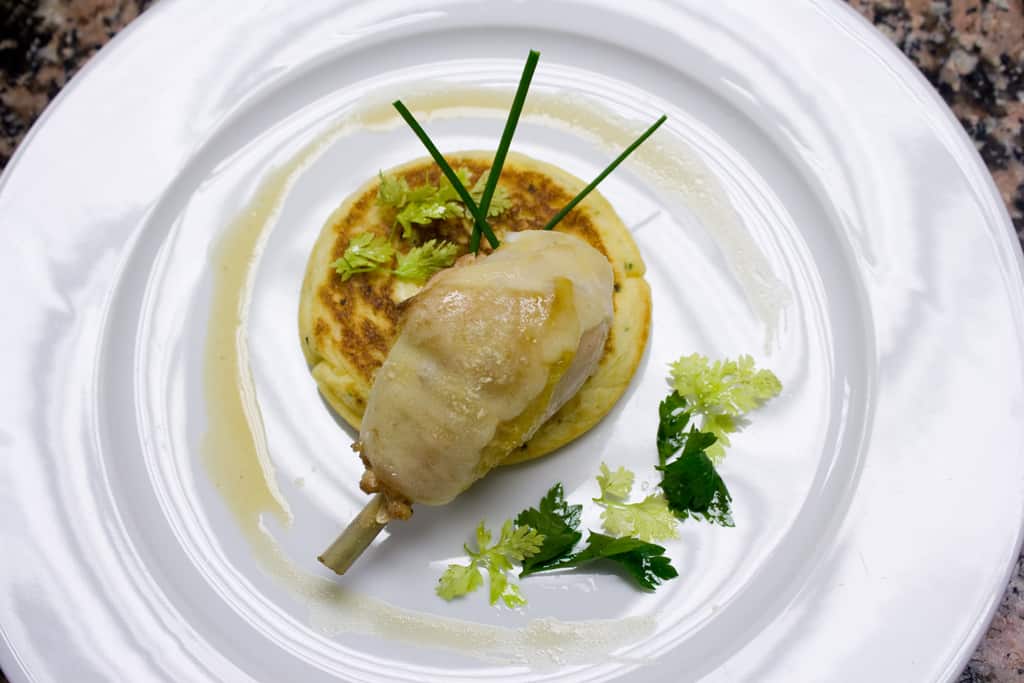 Lesson 5: Poulet Fermier à la Façon de Gaston Gérard
Lesson 5: Poulet Fermier à la Façon de Gaston Gérard
Chicken. Poultry #3
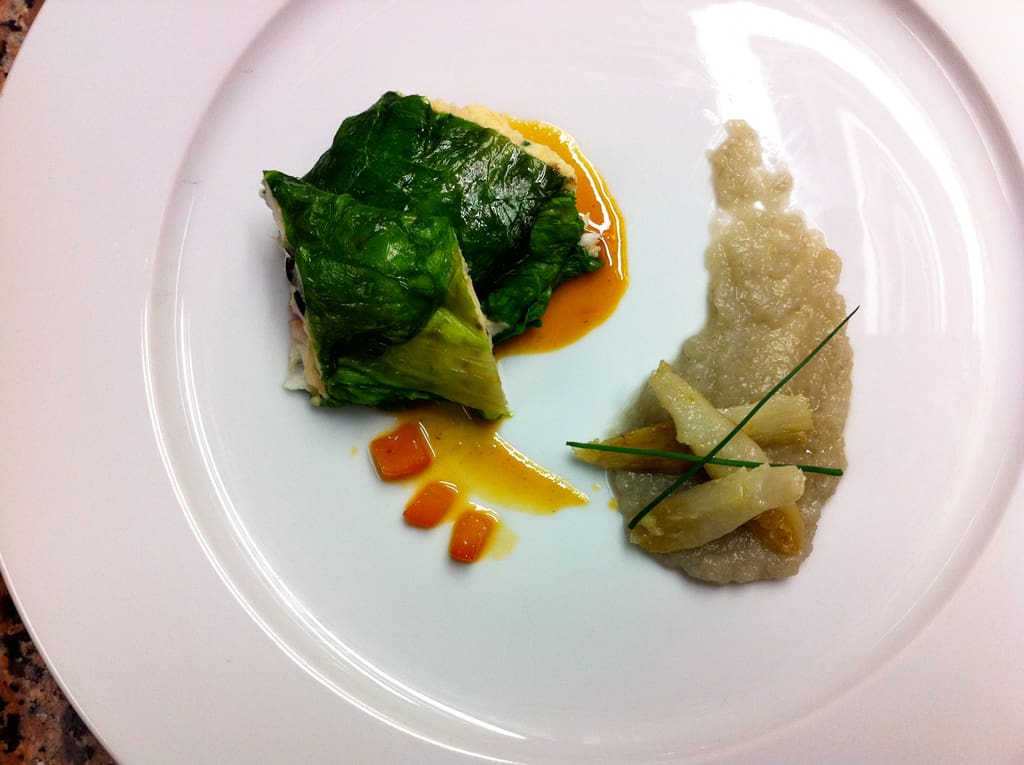 Lesson 6: Filet de Daurade Farcie à la Feuille de Laitue
Lesson 6: Filet de Daurade Farcie à la Feuille de Laitue
Stuffing #3
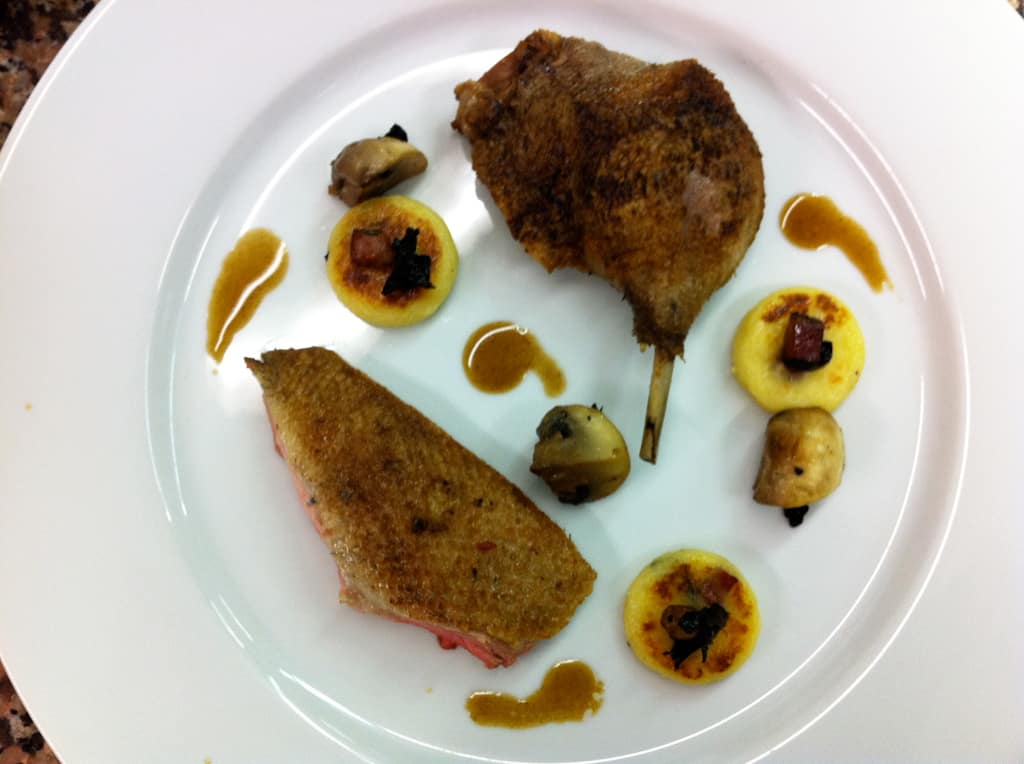 Lesson 7: Salmis de Canard en Cabouillade
Lesson 7: Salmis de Canard en Cabouillade
Duck. Poultry #4
I’ve been trying to be more creative and modern with my plating, and this is where my “innovation” went wrong. I had seen a picture of some super avant garde dish and tried to copy it, but totally failed. The chef didn’t like it either.
Guinea Fowl. Poultry #5
Dough!!! I really miss baking and making pastries.
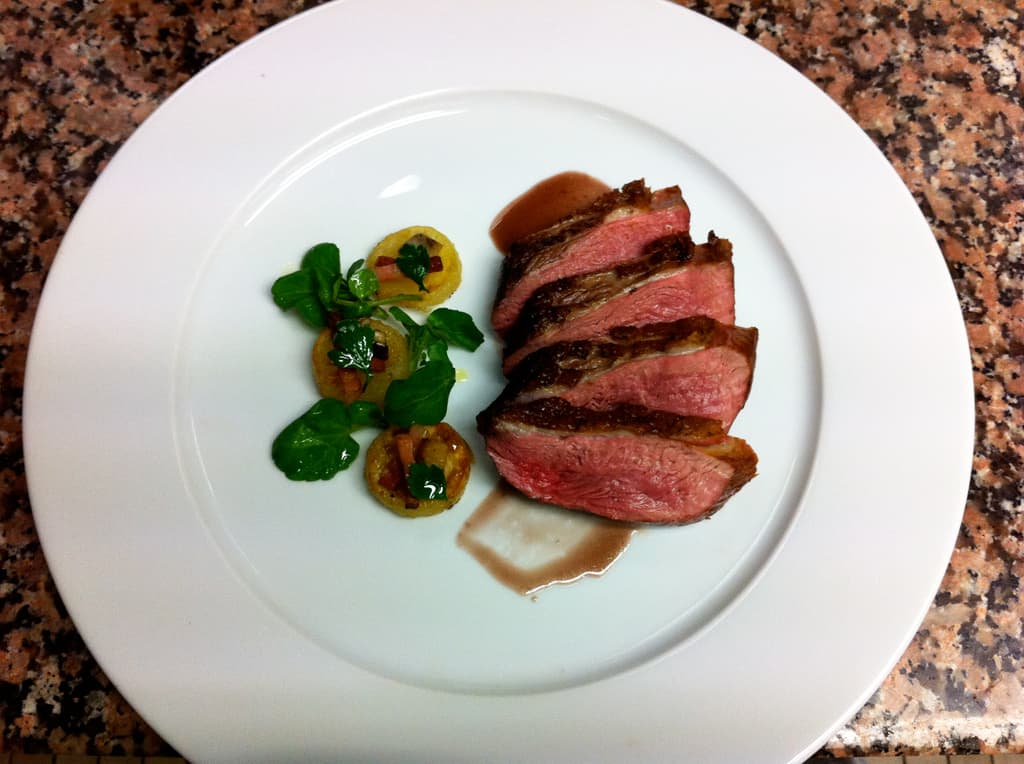 Lesson 9: Magret de Canard à la Bordelaise
Lesson 9: Magret de Canard à la Bordelaise
Duck. Poultry #6
This was when I starting to feel like I was understanding how to plate. There were still a lot of mistakes and improvements, but I felt like I was beginning to understand how to interact the components and express that relationship or feeling through the plate.
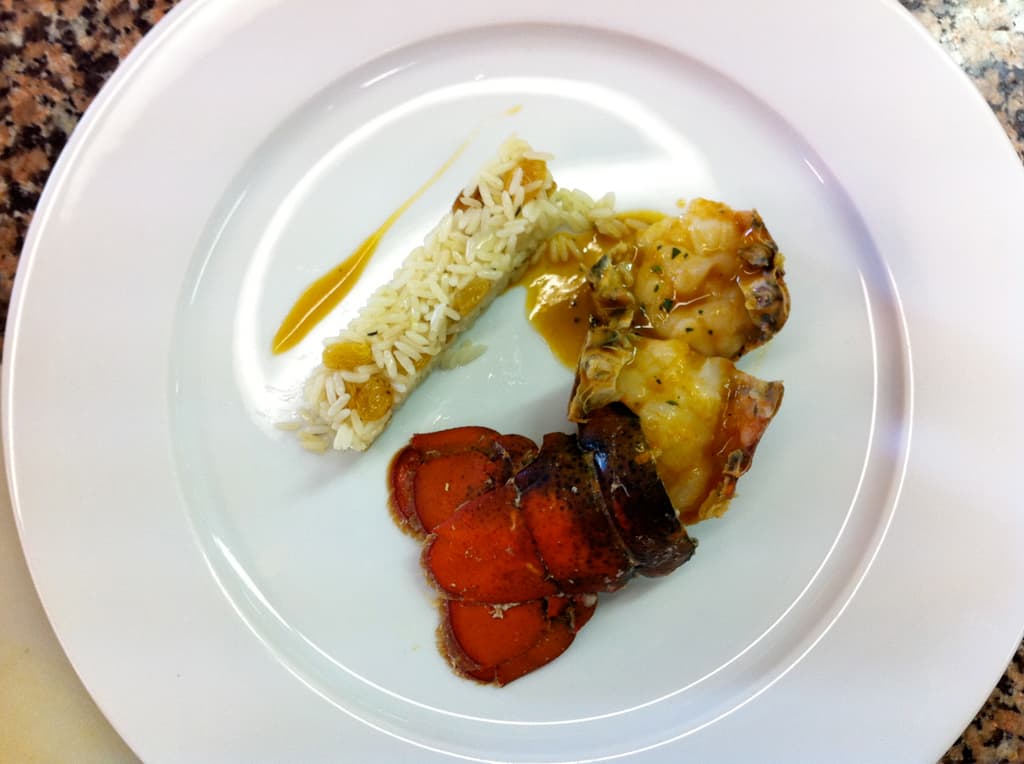 Lesson 10: Homard à l’Américaine
Lesson 10: Homard à l’Américaine
Finally something different! I wish I had made this dish a week and half earlier. I had a super embarrassing moment at dinner one night when I didn’t know what homard was. I felt so ashamed that I didn’t know what lobster was in French! Well, at least I’ll never forget ever again.
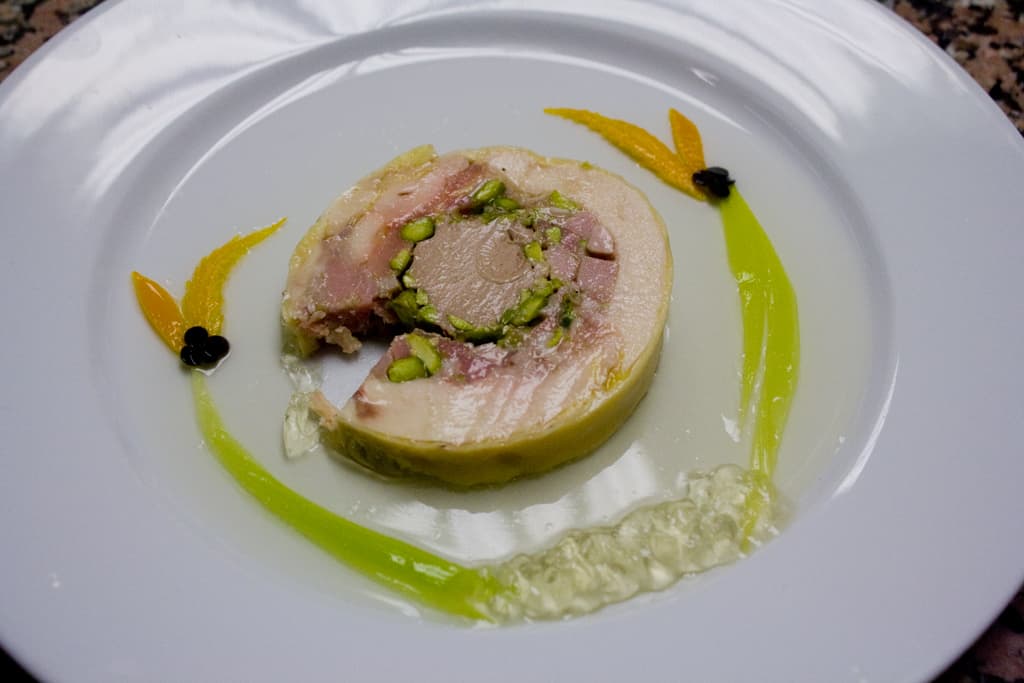 Lesson 11 & 12: Ballotine de Volaille à la Mousse de Foie Gras
Lesson 11 & 12: Ballotine de Volaille à la Mousse de Foie Gras
Chicken, stuffed with pork and duck liver. Poultry #7.
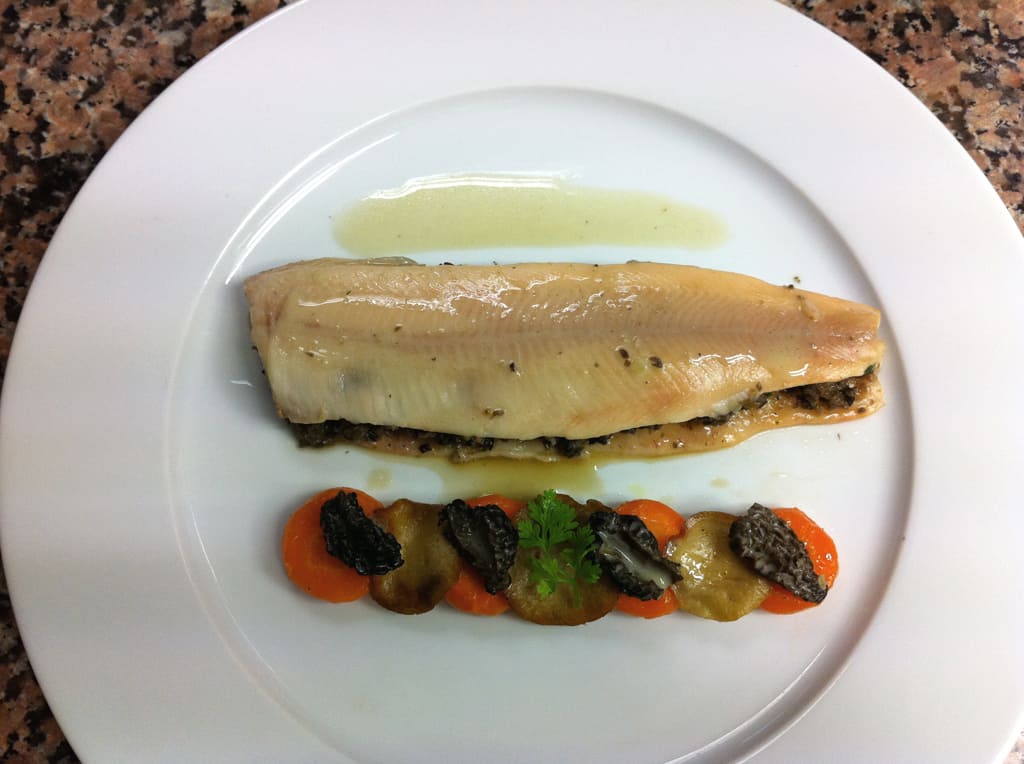 Lesson 13: Truite Farcie Aux Morilles et Braisée au Riesling
Lesson 13: Truite Farcie Aux Morilles et Braisée au Riesling
Stuffing #4.
I heard this is a popular exam recipe. Not too excited about it as trout is a very boney fish. I doubled checked all my filets to make sure I had taken them all out, but of course, the chef finds a couple super thin bones in his gouter bite.
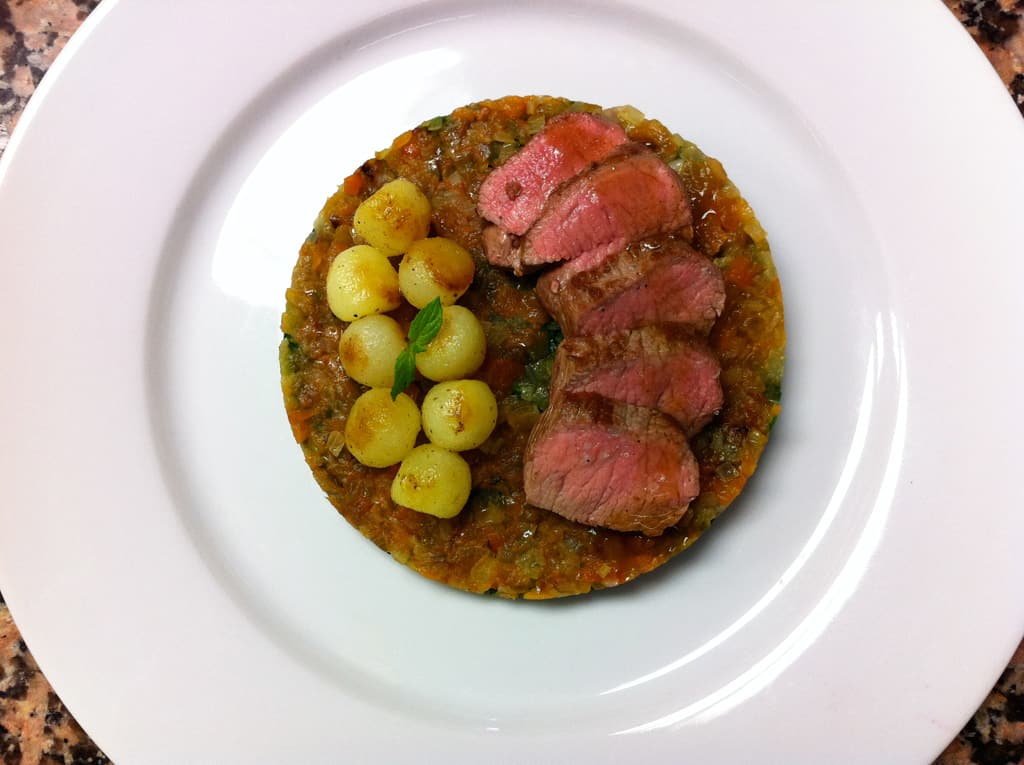 Lesson 14: Tian d’Agneau Cuit Rosé
Lesson 14: Tian d’Agneau Cuit Rosé
Non poultry, non stuffing #1.
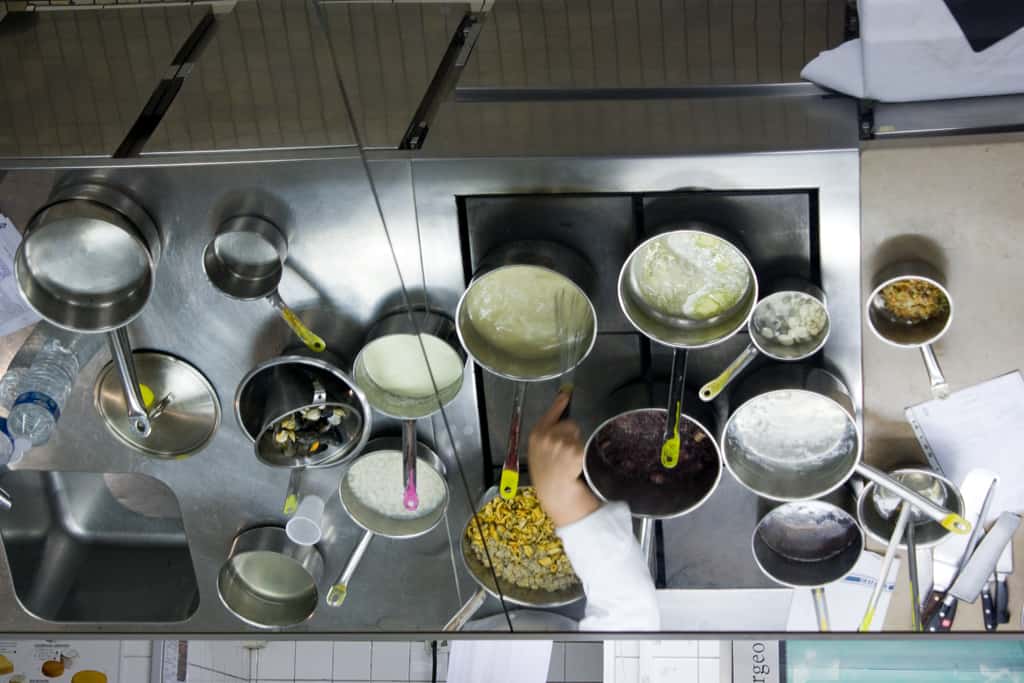
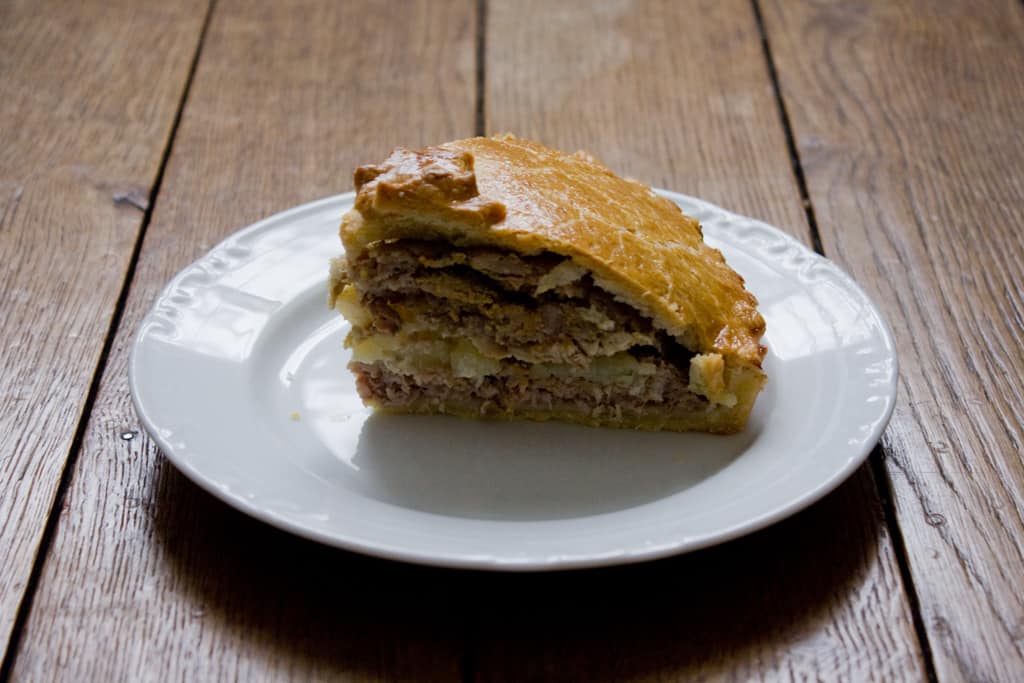
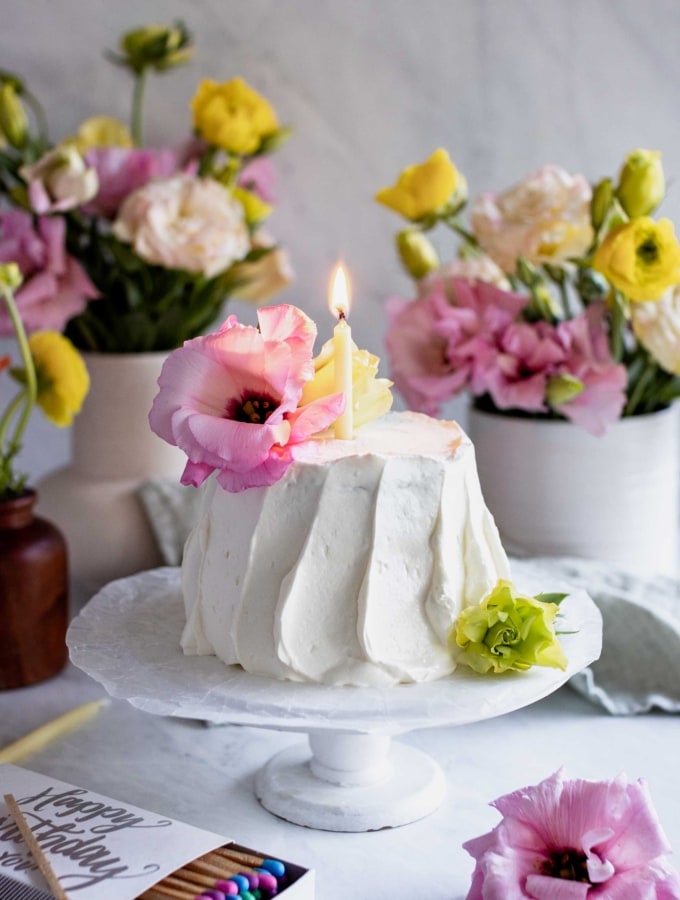
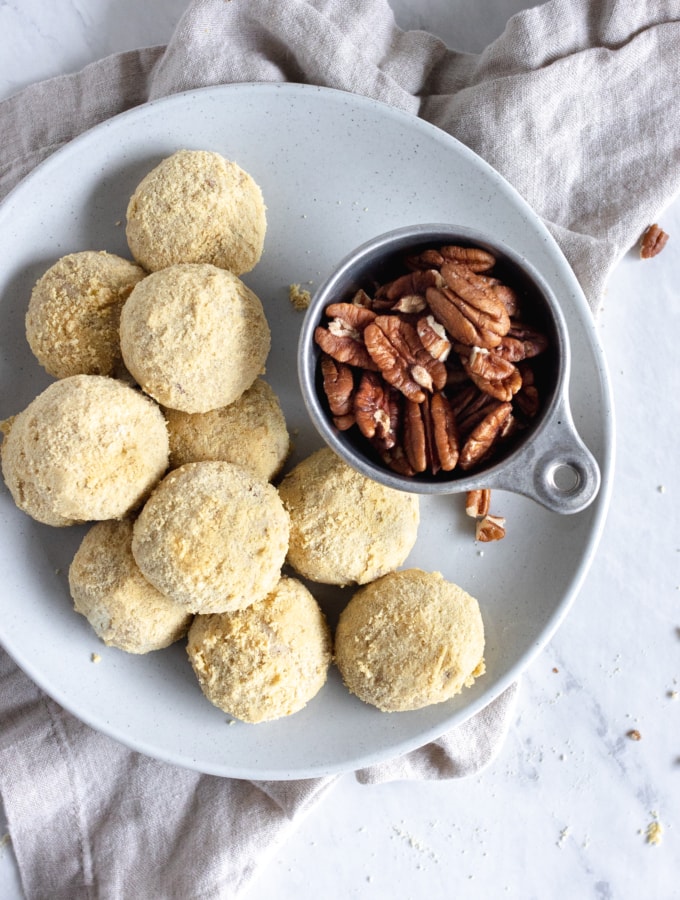
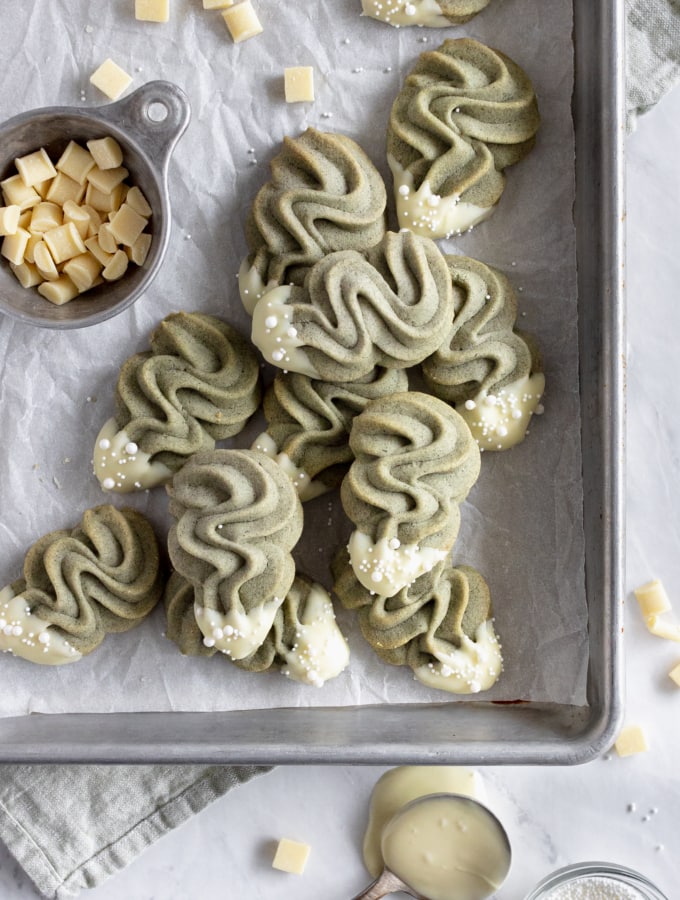
michelle says
As I was reading the Homard part, I was thinking to myself, “Uh Oh, Am I supposed to know what that is too?” To be honest, I don’t know 80% of the fancy food names you reference! haha
Jessica says
Michelle- haha I still have to look up a lot of words too!
Julie says
Jessica these are all exquisite. cant wait to hear more next month in Korea. (right?)
Jessica says
Julie- Yes! Can’t wait to see you in December!
Fran says
Hi Jessica,
This is Fran from your Basic Cuisine Practical class (living in Australia). All of the Intermediate dishes you posted look beautiful. I am signing up for the Intermediate Cuisine class starting next June, although you will be long gone by then. Were the Intermediate Cuisine chefs the same as for Basic Cuisine, or did you have new ones for your practicals?
Jessica says
Hi Fran! How are you?! All the chefs are the same. There were some new chefs for the practicals, but they’re more like freelance chefs so they don’t do demos and they’re usually much nicer. I’m not sure when I’ll be leaving exactly, but our paths might definitely cross again!